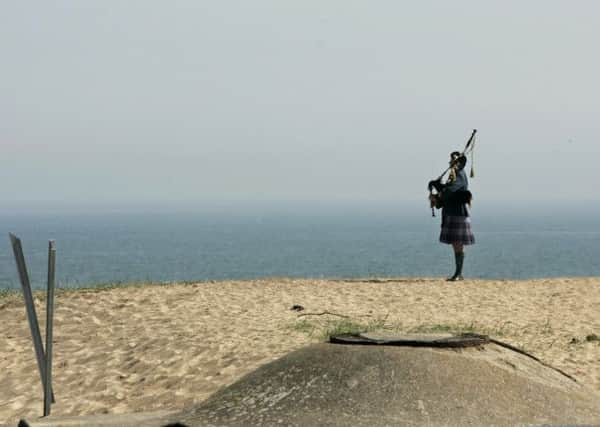Comment: Exhibition honours Commonwealth Scots


In 1914, thousands enlisted in Scotland for military service, and their contributions are rightly being marked. But the preceding decades had seen waves of emigration from Scotland. Across the world, in the young countries of what was then the British Empire, thousands more Scots and men of Scottish descent joined up.
Military service was one medium through which diaspora Scots traditionally expressed their cultural identity and their links with the old country. On the eve of the Great War, there were part-time Scottish regiments in the defence forces of Canada, Australia, New Zealand and South Africa, often with kilted uniform and pipe bands.
Advertisement
Hide AdAdvertisement
Hide AdWhen war broke out, and these countries mobilised their military resources, they assembled new units for overseas service.
In Canada, new infantry battalions were raised locally. In areas of especially strong Scottish settlement, these adopted strongly Scottish identities.
Although many of these had to be reorganised, of the 69 Canadian battalions which eventually formed the Canadian Corps serving in France, Flanders and the UK, 11 had Scottish titles.
In South Africa, an infantry brigade raised for service on the Western Front included one Scottish battalion. In Australia and New Zealand, Scottish connections came through informally and by 1918 Scottish pipes and drums were to be found among the Australian and New Zealand forces on the Western Front.
As the excitement and optimism of 1914 gave way to the grim reality of years of conflict, the human cost of fighting the First World War became a foundation of national consciousness – memory of actions like those of the Canadians at Vimy Ridge, for Australia and New Zealand at Gallipoli and for South Africa at Delville Wood, became emotive and defining national experiences.
The shared experiences of war and expressions of identity are remembered in those countries through memorials and museums and through individual objects which epitomise those wider stories.
In Canada, the bagpipes of James Richardson VC are normally housed in a place of honour in the British Columbia State legislature building in Victoria. The Victoria Cross awarded to Irish-born, Scottish-raised James Crichton is a treasure of the Auckland War Memorial Museum.
In South Africa, Nancy the springbok was the mascot of the South African Infantry (South African Scottish). Nancy survived the war but died shortly afterwards. The skin was preserved and mounted and Nancy, commemorated by taxidermy, is in the collections of Ditsong National Museum of Military History, Johannesburg.
Advertisement
Hide AdAdvertisement
Hide AdAmong many artefacts kept by the London Scottish Regiment is a field communion set which belonged to Reverend David Lusk, a Scottish Presbyterian chaplain twice decorated for valour in the field.
With the support of the Scottish Government, National Museums Scotland has been able to bring these treasured objects to Edinburgh on loan to form the core of the current exhibition, Common Cause: Commonwealth Scots and the Great War, part of the Year of Homecoming (National Museum of Scotland, Chambers Street, Edinburgh until 12 October. Admission is free. www.nms.ac.uk/commoncause).
The exhibition and accompanying book of the same name bring together two significant but distinct areas of study, namely Scottish diaspora and the Scottish military tradition, with many objects from the national collection also on show.
Common Cause, and also Next of Kin (another exhibition currently at the National War Museum prior to touring Scotland), are NMS contributions to national and international commemorations of the centenary of the First World War, in association with the Scottish War Commemorations Panel and the international First World War Centenary Partnership.
• Dr Stuart Allan is principal curator, Scottish Late Modern collections, National Museums Scotland, www.nms.ac.uk